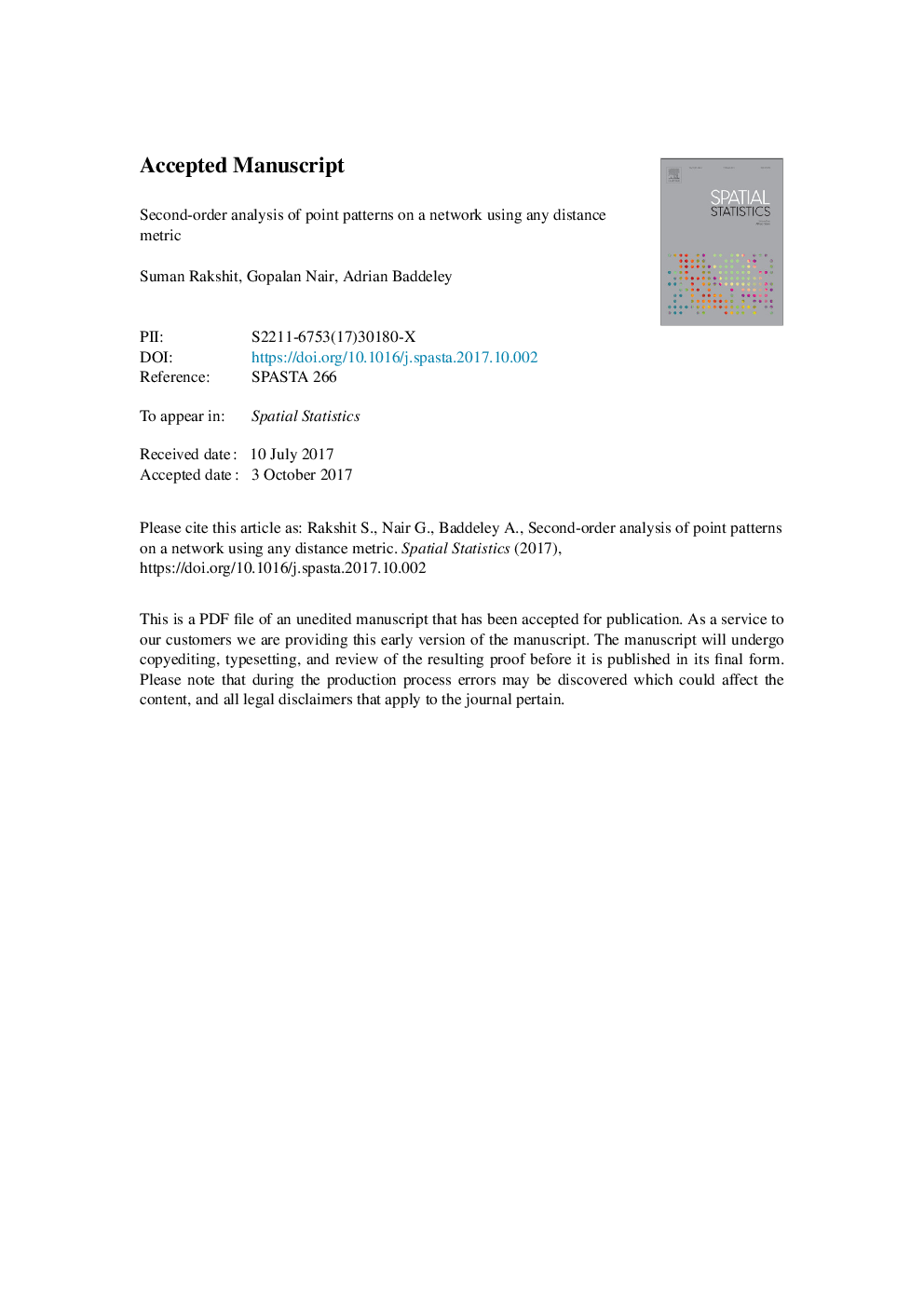| Article ID | Journal | Published Year | Pages | File Type |
|---|---|---|---|---|
| 7496502 | Spatial Statistics | 2017 | 43 Pages |
Abstract
The analysis of clustering and correlation between points on a linear network, such as traffic accident locations on a street network, depends crucially on how we measure the distance between points. Standard practice is to measure distance by the length of the shortest path. However, this may be inappropriate and even fallacious in some applications. Alternative distance metrics include Euclidean, least-cost, and resistance distances. This paper develops a general framework for the second-order analysis of point patterns on a linear network, using a broad class of distance metrics on the network. We examine the model assumptions that are implicit in choosing a particular distance metric; define appropriate analogues of the K-function and pair correlation function; develop estimators of these characteristics; and study their statistical performance. The methods are tested on several datasets, including a demonstration that different conclusions can be reached using different choices of metric.
Related Topics
Physical Sciences and Engineering
Earth and Planetary Sciences
Earth and Planetary Sciences (General)
Authors
Suman Rakshit, Gopalan Nair, Adrian Baddeley,
